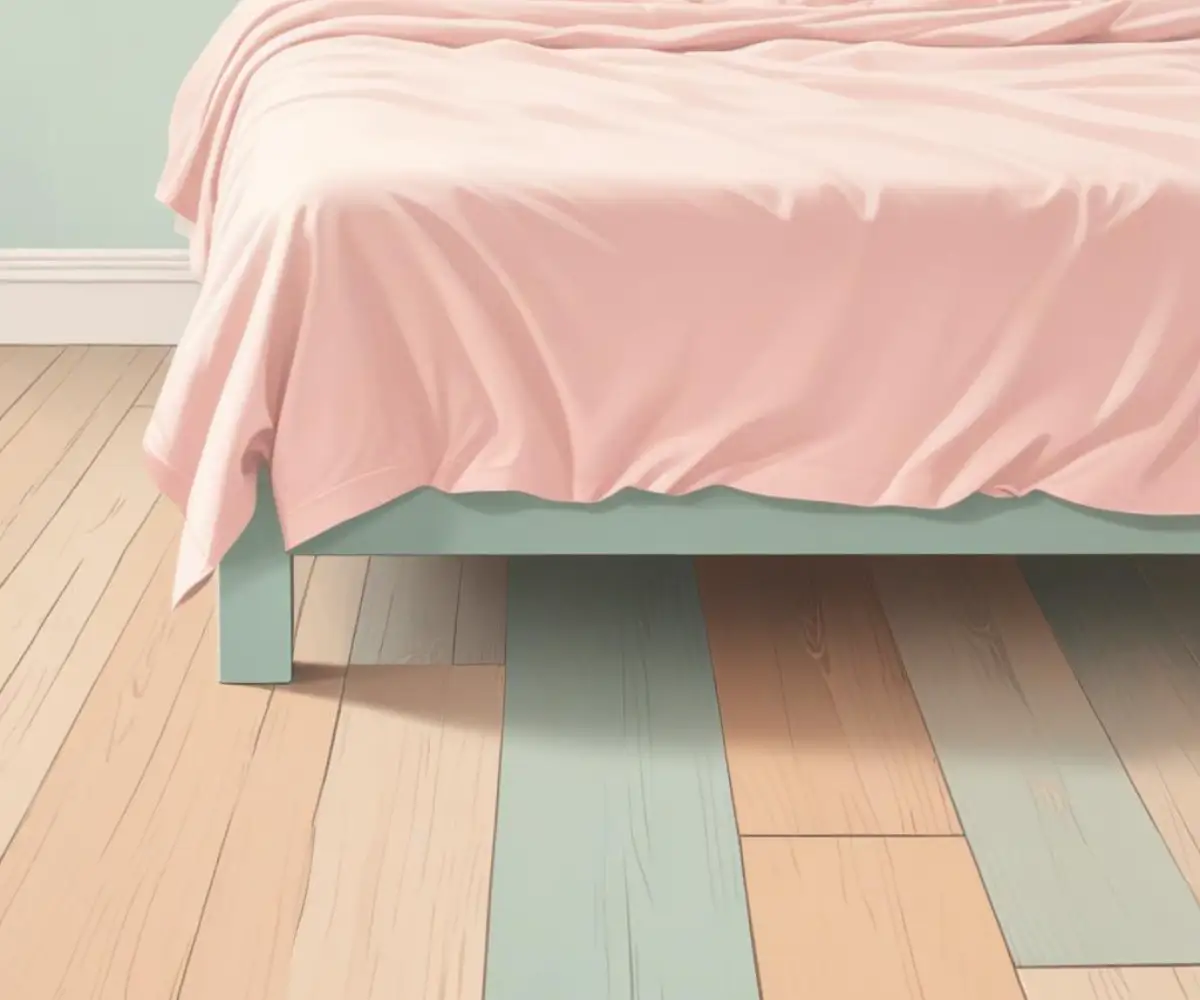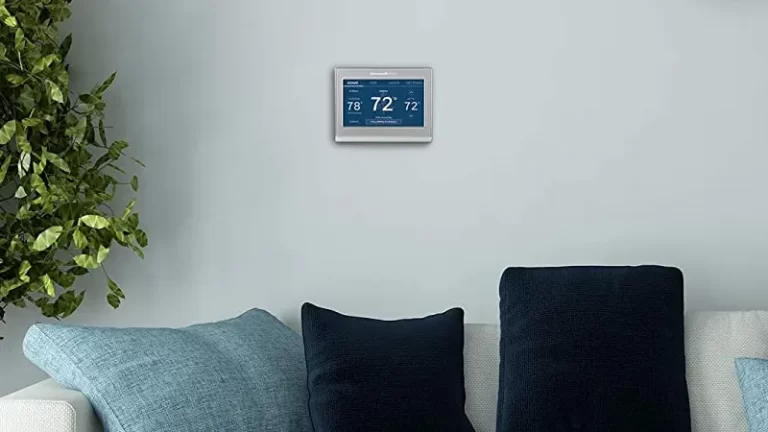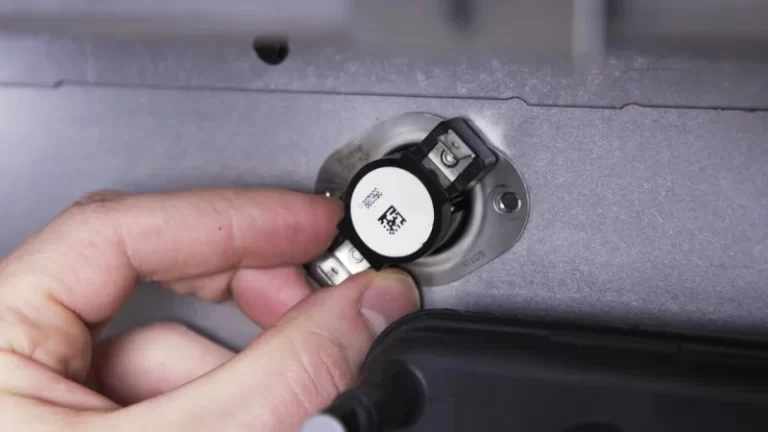Bed Over Floor Vent? Stop! This Costly Mistake Can Wreck Your HVAC
You’ve pushed and pulled, trying every possible layout for your bedroom, but the conclusion is unavoidable. The only place the bed fits comfortably is directly over a floor vent. It’s a common dilemma in homes with challenging layouts, but what seems like a simple furniture placement choice can spark a cascade of expensive and dangerous problems.
Many homeowners assume that blocking one small vent is harmless. However, this seemingly minor obstruction can lead to serious consequences, including skyrocketing energy bills, catastrophic HVAC system failure, and even potential fire hazards. Understanding the risks is the first step to finding a safe and effective solution.
You'll Learn About
Why Placing a Bed Directly Over a Floor Vent is a Bad Idea
Your home’s heating, ventilation, and air conditioning (HVAC) system is a balanced network. It’s designed to distribute a specific volume of conditioned air throughout your living spaces. When you obstruct a vent, you disrupt this delicate balance, forcing the entire system to work inefficiently and under strain.
It Cripples Your HVAC System’s Efficiency
Blocking a supply vent with a solid object like a bed creates significant backpressure in your ductwork. The blower motor, which is the heart of your HVAC system, is forced to work much harder to push air through the restricted path. This constant strain leads to increased energy consumption, which you’ll notice on your monthly utility bills.
Over time, this excessive workload can cause the blower motor to wear out prematurely, leading to costly repairs. Furthermore, the restricted airflow prevents the room from reaching its target temperature, causing the system to run for longer cycles than necessary. This inefficiency undermines the comfort your HVAC system is supposed to provide.
The Hidden Dangers: Fire and Overheating
When a supply vent for a furnace is blocked, the heat it’s supposed to release into the room gets trapped in the ductwork. This can cause the furnace’s heat exchanger to overheat. Modern furnaces are equipped with a safety feature called a high-limit switch, which shuts the system down if it detects dangerously high temperatures.
However, relying on this safety switch is a risky gamble. Frequent tripping can wear out the switch, and if it fails, the overheating can become a serious fire hazard. Dust, lint, and other flammable debris that naturally accumulate under a bed can easily ignite if exposed to concentrated, excessive heat. While modern systems make this a less common occurrence, the risk is never zero, especially with older equipment.
Your Comfort Killer: Uneven Room Temperatures
The most immediate and noticeable effect of a blocked vent is a decline in comfort. The conditioned air—whether warm or cool—gets trapped underneath the bed, unable to circulate throughout the room. This results in uncomfortable hot and cold spots.
Your bed area might feel overly warm in the winter, while the rest of the room remains chilly. This problem is especially pronounced in challenging spaces, such as a master bedroom over the garage, which is already prone to temperature fluctuations. A blocked vent in such a room makes maintaining a comfortable environment nearly impossible.
A Breeding Ground for Mold and Allergens
In the summer, when your air conditioner is running, the cool air released from the vent can cause condensation to form on the cool surfaces under your bed. The dark, humid space created by the trapped air is a perfect breeding ground for mold and mildew. This can damage your mattress, bed frame, and flooring, while also releasing harmful spores into your air.
Additionally, the vent will blow dust, pet dander, and other allergens directly into the underside of your mattress and bedding. This can significantly reduce your indoor air quality and trigger allergies or respiratory issues. Instead of circulating clean air, the blocked vent creates a concentrated pocket of contaminants right where you sleep.
The Smart Solutions: How to Safely Position Your Bed Over a Vent
Fortunately, being forced to place your bed over a vent doesn’t mean you have to accept the risks. Several clever and effective solutions can mitigate the danger and restore proper airflow, ensuring your comfort and safety.
Solution 1: Elevate Your Bed Frame
One of the simplest and most effective strategies is to create more space between the floor and your bed. A bed frame with high clearance—ideally at least 12 to 18 inches—allows air from the vent to escape and circulate into the room instead of remaining trapped.
If you love your current bed frame, bed risers are an inexpensive and sturdy alternative. These blocks, typically made of heavy-duty plastic or wood, fit under each leg of the bed frame to lift it several inches off the ground. This simple elevation can dramatically improve airflow and is a great first step.
Solution 2: The Game-Changer – Air Vent Diverters and Extenders
Specialized products are designed specifically for this problem and offer the most complete solution. Air vent diverters (also called deflectors) are curved, often magnetic, plastic shields that attach to your vent register. They redirect the airflow sideways, pushing it out from under the bed.
For vents that are completely covered, an air vent extender is the superior choice. This device is essentially a low-profile, extendable duct that connects to your floor vent and channels the air to an unobstructed spot, such as the foot or side of the bed. They are highly effective at ensuring the conditioned air makes it into the room where it belongs.

Solution 3: Choosing the Right Bed Frame for Rooms with Floor Vents
If you’re in the market for a new bed, you can proactively solve the problem. Opt for bed frames that are inherently vent-friendly. Look for models with tall legs and an open design.
Avoid solid-base platform beds or captain’s beds with storage drawers that sit flat on the floor. These designs offer zero clearance and are the worst offenders for blocking airflow. A simple metal frame or a wooden frame with ample space underneath is always the better choice for rooms with floor vents.
| Solution | Estimated Cost | Effort Level | Best For |
|---|---|---|---|
| Bed Risers | $15 – $30 | Low | Creating vertical clearance for partial or full vent coverage. |
| Air Vent Deflector | $10 – $20 | Low | Beds that only partially cover the vent, redirecting air sideways. |
| Air Vent Extender | $20 – $40 | Low | The best solution for beds that completely cover a vent. |
| High-Clearance Bed Frame | $150+ | High | A permanent, long-term solution when buying a new bed. |
Debunking Common Myths and Answering Your Top Questions
Misinformation about HVAC systems is common. Addressing these myths is crucial for maintaining a safe and efficient home environment.
Myth: “Closing the vent is a good alternative.”
This is one of the most damaging misconceptions. Closing a vent does not solve the airflow problem; it worsens it. The air pressure still builds up behind the closed register, increasing the strain on your entire duct system.
This pressure can lead to air leaks in other parts of your ductwork, wasting energy and forcing your HVAC system to work even harder. Never intentionally close more than a few vents in your home, as it disrupts the system’s balance and can lead to significant damage.
How Far Does a Bed Need to Be From a Vent?
Ideally, all furniture should be positioned at least 6 to 12 inches away from floor vents to allow for proper circulation. If you must place a bed over a vent, ensure there is at least 18 inches of vertical clearance to minimize airflow restriction. The more space you can create, the better.
What About Return Air Vents?
It’s equally important not to block return air vents. These larger grilles pull air *into* the HVAC system to be heated or cooled. Blocking a return vent starves the system of air, which can cause the same kind of strain and overheating as a blocked supply vent. Always keep return vents completely clear.
Advanced Considerations for a Healthy and Efficient Home
A single blocked vent is often a symptom of larger issues related to home efficiency and airflow dynamics. Taking a holistic view can lead to greater comfort and long-term savings.
The Ripple Effect: How One Blocked Vent Affects Your Whole House
An HVAC system is engineered for equilibrium. Blocking one vent creates a pressure imbalance that can have strange effects elsewhere. You might notice drafts from unusual places, or other rooms may become harder to heat and cool as the system struggles to compensate.
In some cases, severe pressure imbalances within wall cavities can cause subtle but strange phenomena. You might even notice issues like mysteriously bending outlet covers as air pressure seeks an escape path. This is a clear signal that your home’s airflow is seriously compromised.
Beyond the Vent: A Holistic Approach to Room Comfort
Solving the vent issue is a great start, but don’t stop there. Ensure the room is well-sealed to prevent the conditioned air you’ve just freed from escaping. Check for drafts around windows and consider upgrading your trim for a better seal against the floor.
Improving the seal of a room is a great DIY project, and finding the best place to buy baseboards can make it an affordable upgrade. A well-sealed, well-insulated room with proper airflow is the ultimate recipe for consistent comfort.
When to Call a Professional HVAC Technician
If you’ve implemented these solutions and still experience issues like loud noises from your furnace, rooms that won’t stay warm, or frequent system cycling, it’s time to call a professional. An HVAC technician can assess your system’s overall health and balance.
In some extreme cases, they may recommend moving the vent to a more suitable location. While this is a more intensive and costly solution, it provides a permanent fix for a room with an otherwise impossible layout.
A Simple Change for a Safer, More Comfortable Home
Placing a bed over a floor vent is a common furniture arrangement born out of necessity, but it should never be ignored. The potential consequences—from higher energy bills and poor air quality to severe HVAC damage and fire risks—are too significant.
By using simple and affordable solutions like bed risers or an air vent extender, you can correct the problem in minutes. This small adjustment will protect your investment in your home, improve your comfort, and ensure your HVAC system operates safely and efficiently for years to come.


